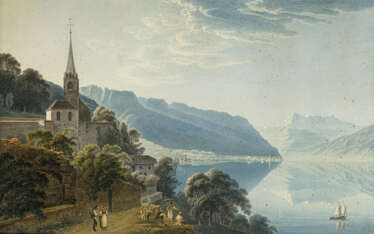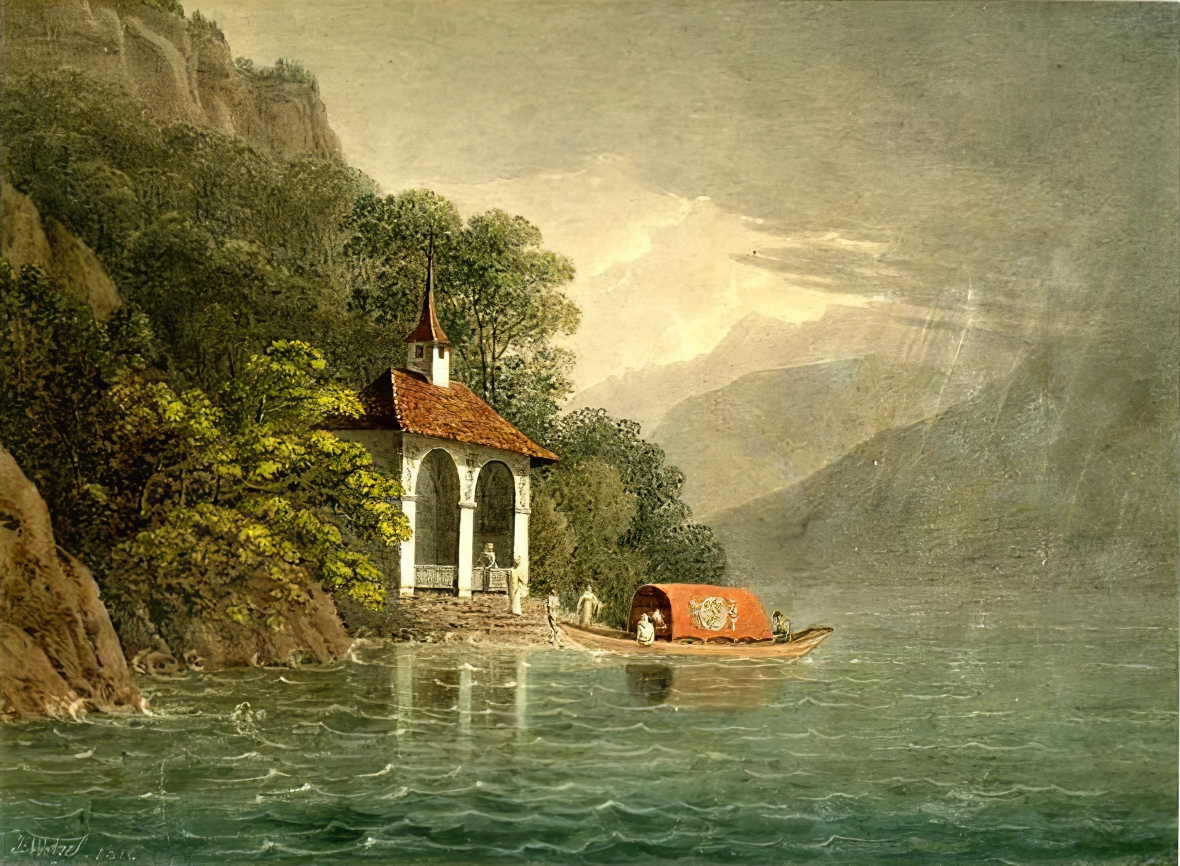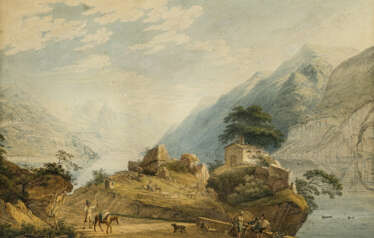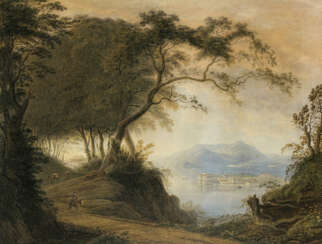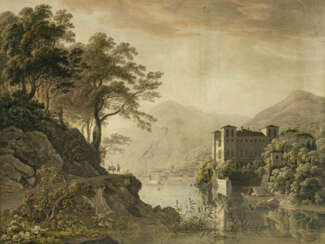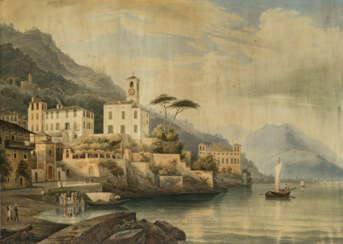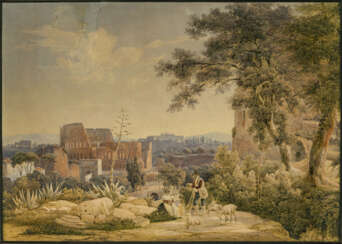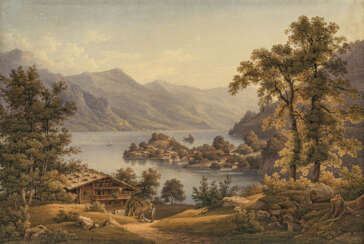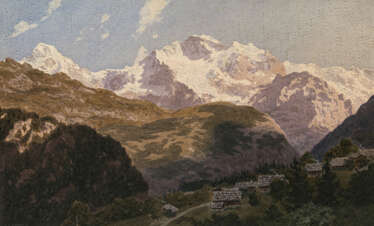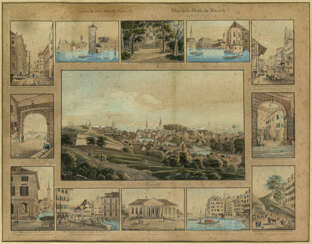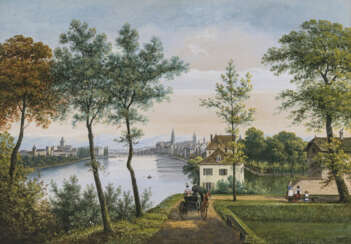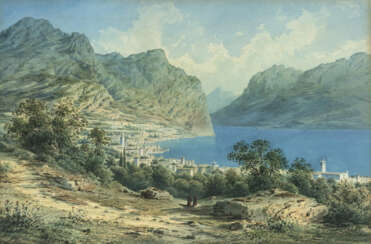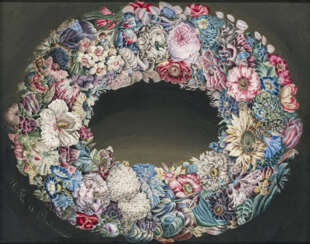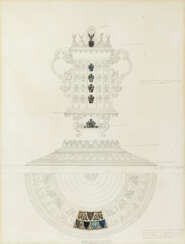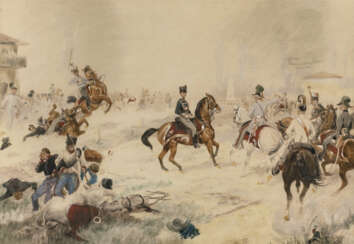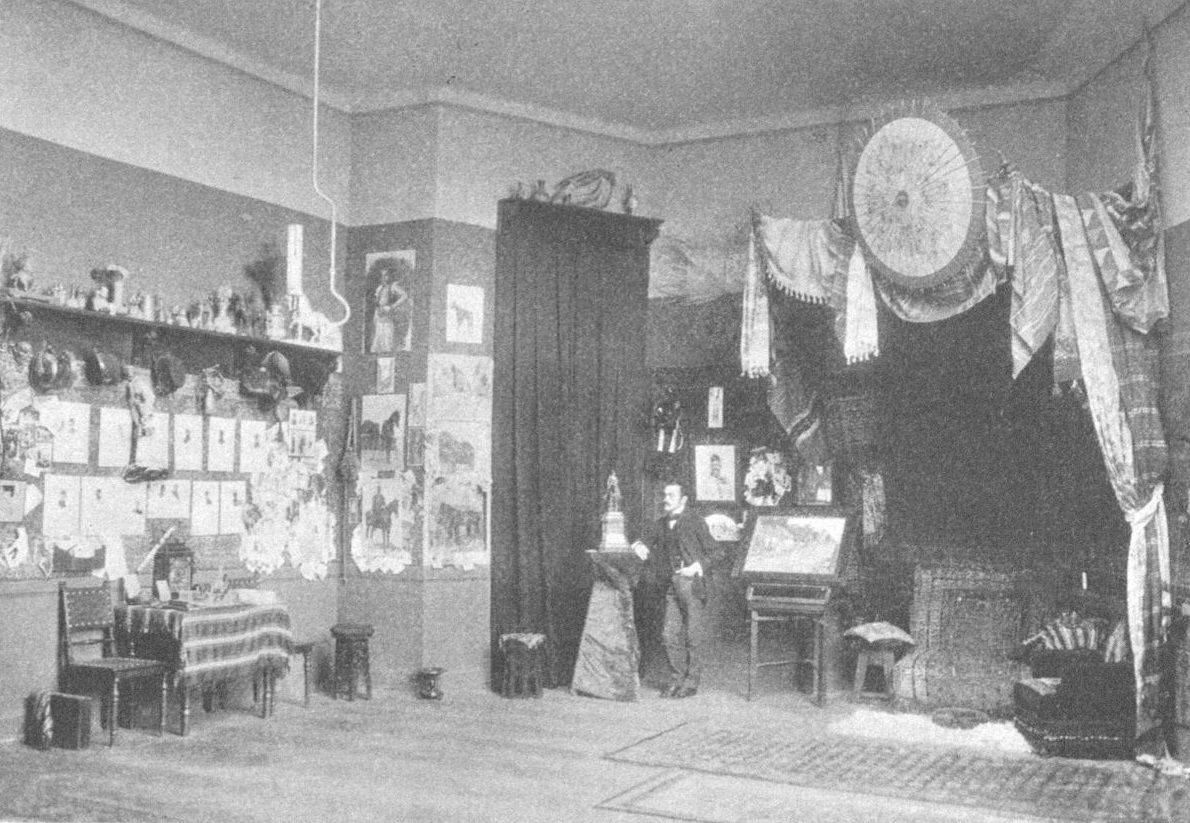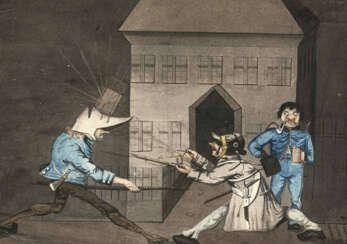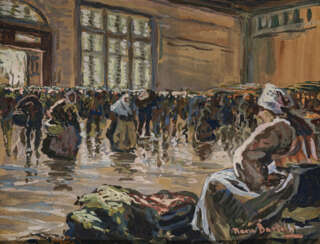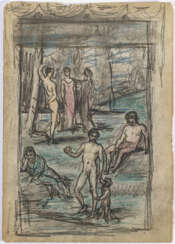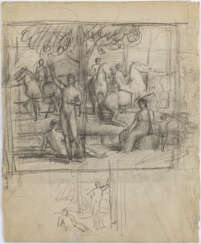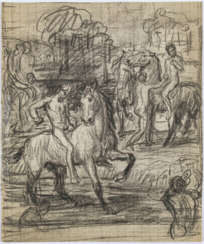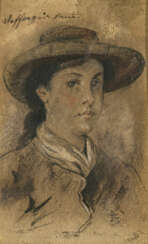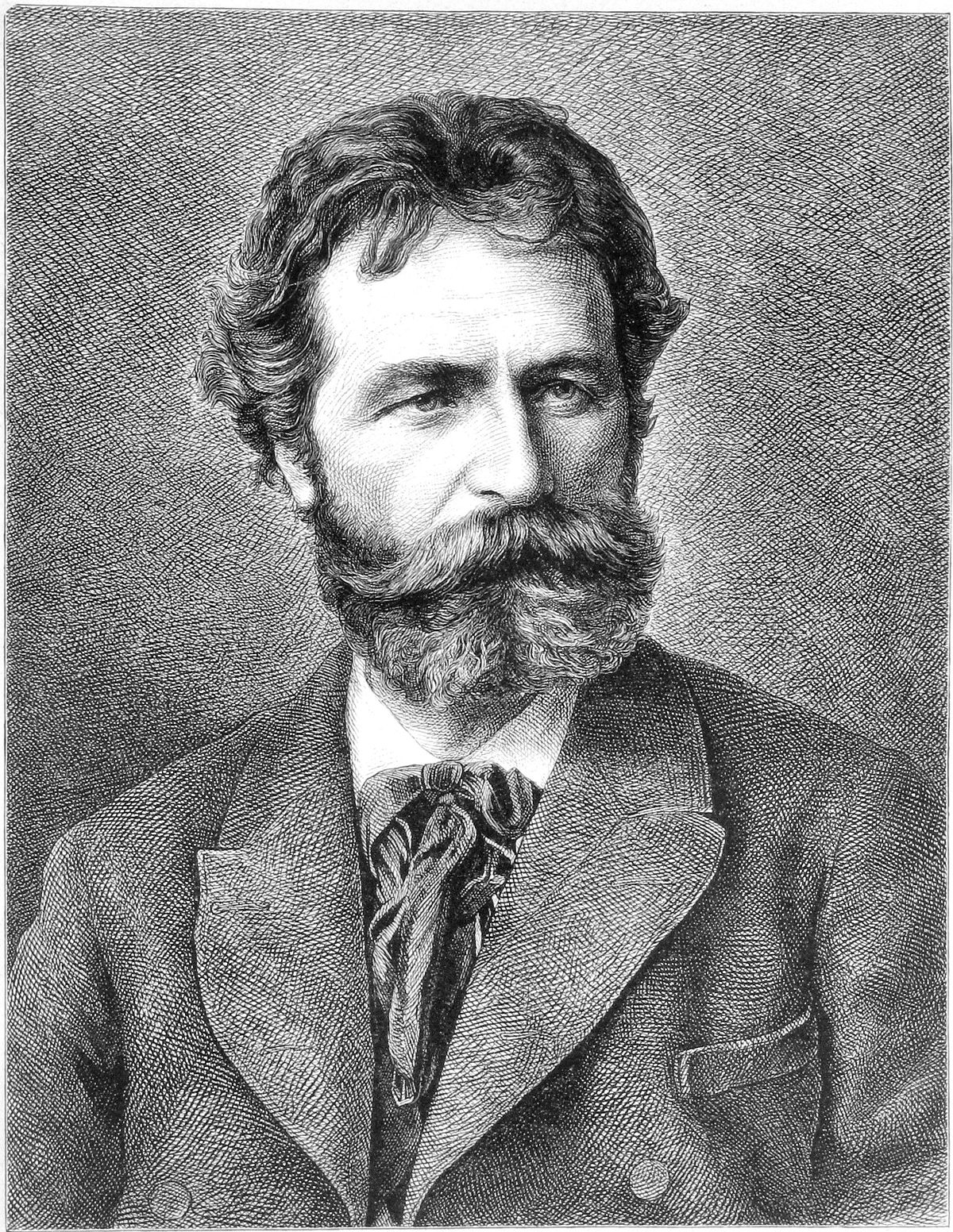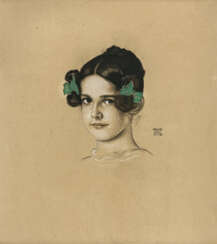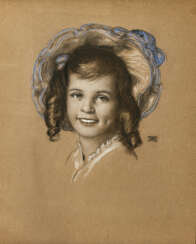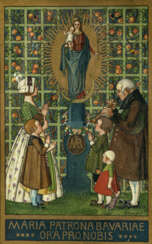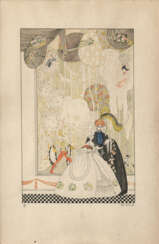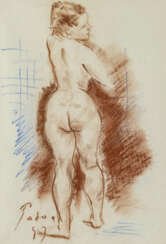
Graphics 19th-20th century — Graphik und Gemälde 15.-20- Jh
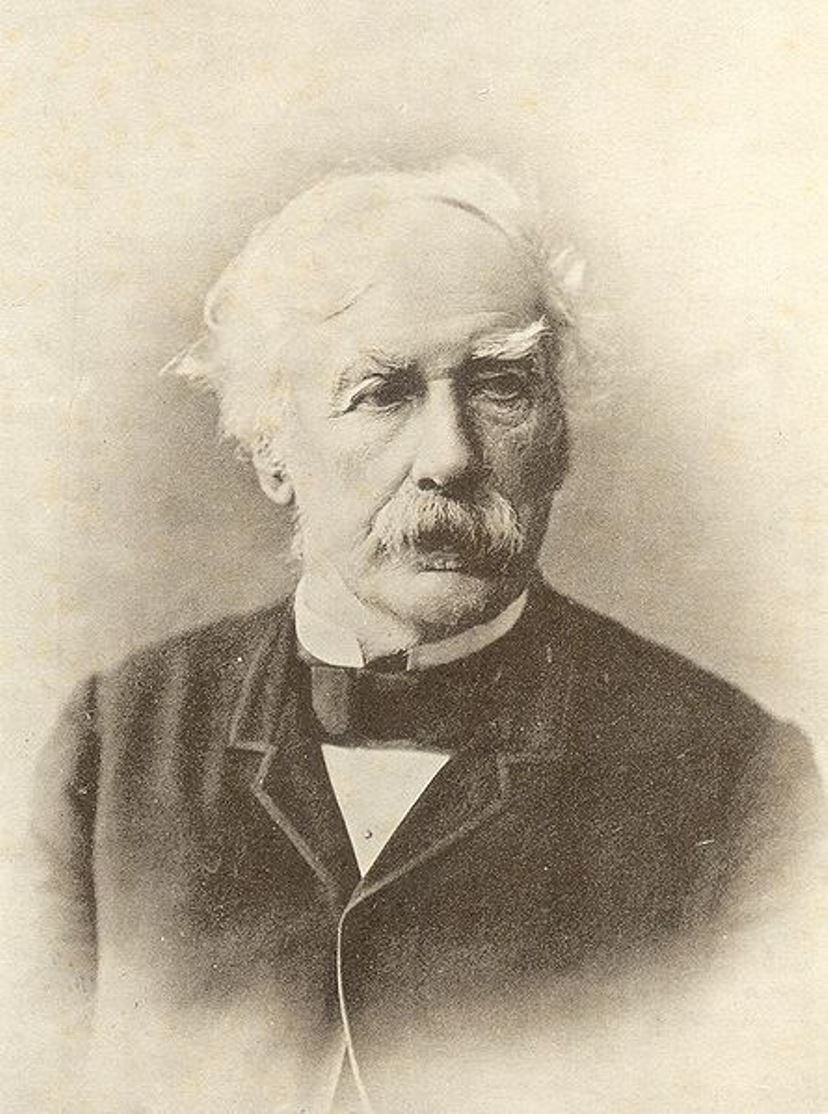
Salomon Corrodi was an Italian-Swiss watercolor painter.
At the age of twenty-two, Corrodi moved from Zurich to Italy, his parents' homeland, and took up the study of watercolor landscape painting in Rome with Jacob Suter (1805-1874). He traveled and painted landscapes extensively, and by the mid-19th century had become a recognized master of watercolor landscape painting as well as a teacher.
Salomon Corrodi lived a long and productive life, laboring until his death and producing many exquisite landscapes of coastal and mountain vistas as well as vedutas. Two of his sons, Herman and Arnold, also became artists.

Salomon Corrodi was an Italian-Swiss watercolor painter.
At the age of twenty-two, Corrodi moved from Zurich to Italy, his parents' homeland, and took up the study of watercolor landscape painting in Rome with Jacob Suter (1805-1874). He traveled and painted landscapes extensively, and by the mid-19th century had become a recognized master of watercolor landscape painting as well as a teacher.
Salomon Corrodi lived a long and productive life, laboring until his death and producing many exquisite landscapes of coastal and mountain vistas as well as vedutas. Two of his sons, Herman and Arnold, also became artists.
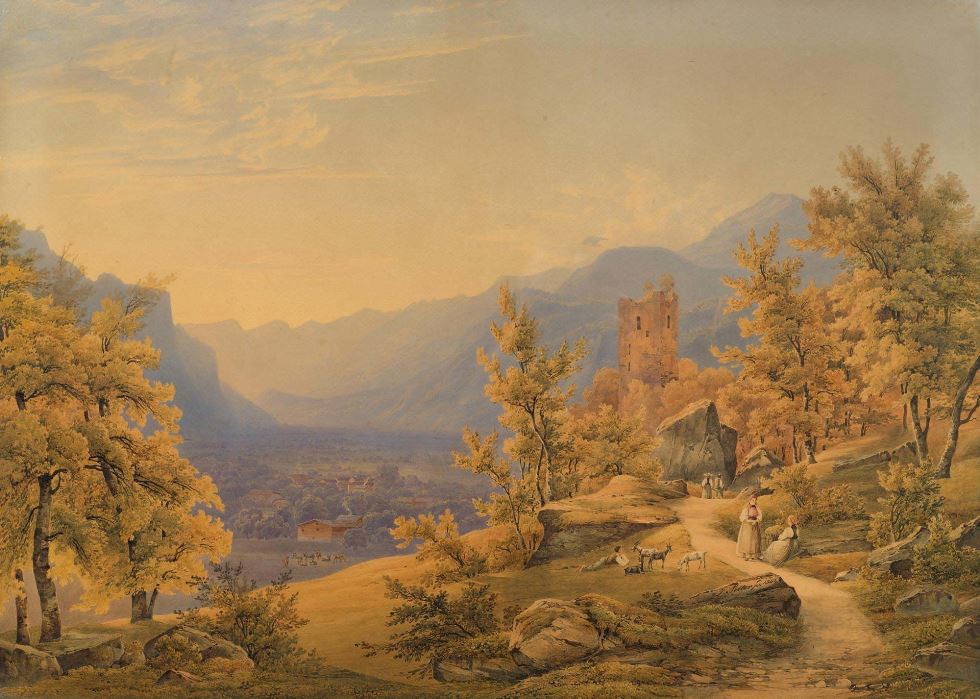
Jakob Suter was a Swiss watercolor painter and engraver.
Suter worked with etchings and engravings, but in 1833 he traveled to Rome, where he perfected his watercolor technique. Jacob Suter painted exquisite idyllic mountain landscapes, portraits of women in Swiss national costumes.
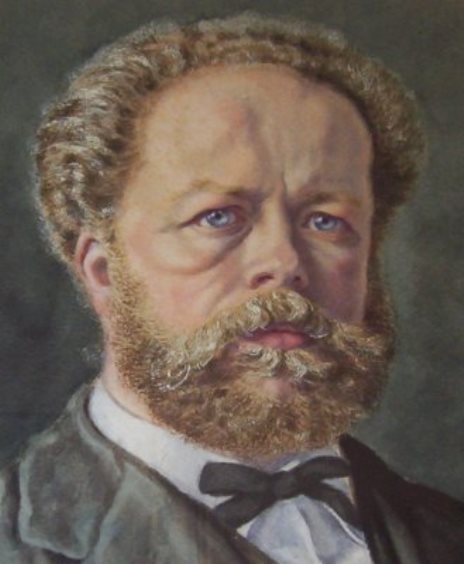
Leonhard Steiner was a Swiss industrialist, artist, and playwright.
Leonhard Steiner was the son of a wealthy silk manufacturer and, having artistic and musical inclinations, was forced to take over his father's business. In the mid-1870s, among other duties, he was president of the Zurich Stock Exchange and served as president of the Exchange Association, but his activities in this field failed.
Steiner was forty-six years old when he decided to devote himself fully to painting and achieved a certain skill. He even managed to feed his family of ten through this labor. He painted high-altitude landscapes, which were very popular. Steiner also created several comedies, edited a Swiss-German dictionary and was an expert in the dialect of the city of Zurich. His work was also closely linked to the musical life of the city, as he was the longtime president of the men's choir. To this day, Steiner remains a highly respected man in Zurich precisely because of his work in the arts.
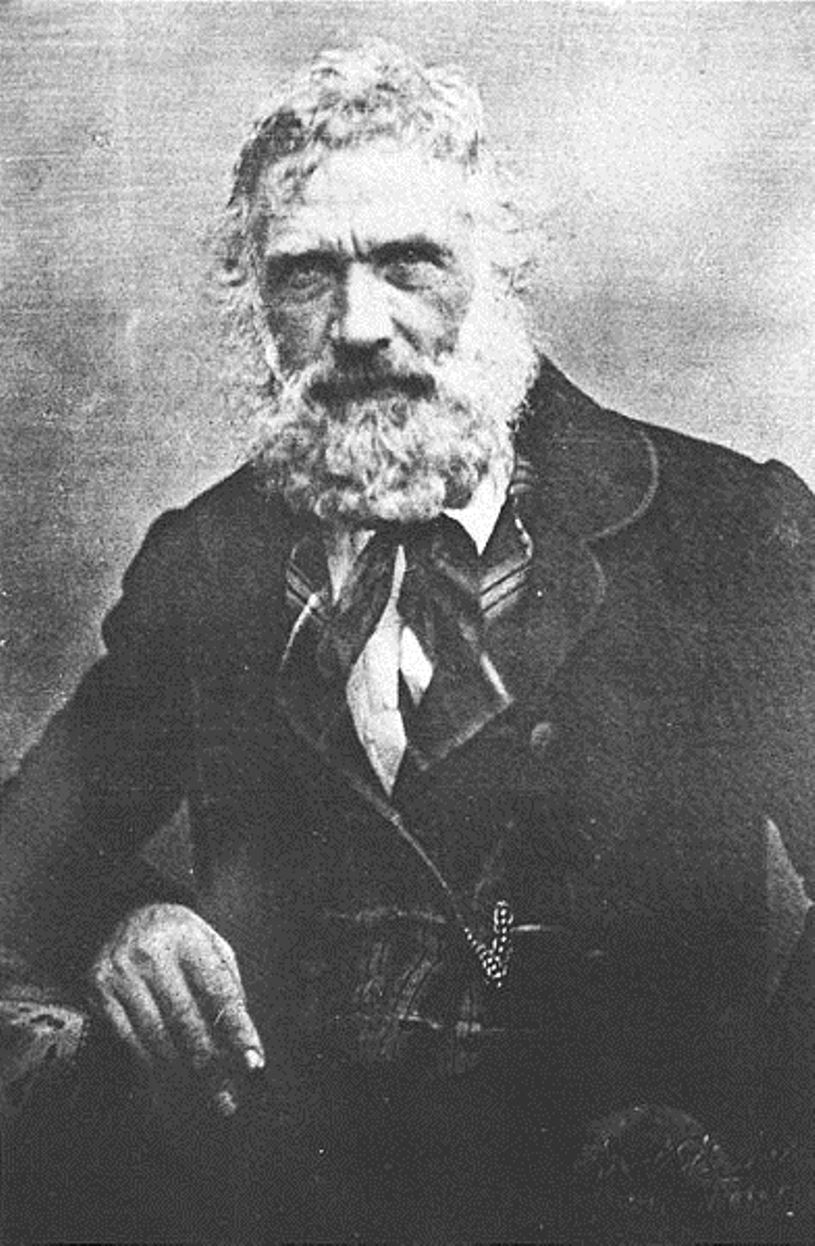
Johann Baptist Isenring was a Swiss landscape painter and printmaker, one of the first photographers in 19th-century Switzerland.
Johann studied painting and aquatint at the Munich Academy of Fine Arts, opened an art studio in St. Gallen in 1828 and soon began publishing his lithographic collection of picturesque views of Switzerland's most remarkable cities and towns.
In 1839, Isenring, fascinated by the discoveries of Niépce and Daguerre, bought equipment for "daguerreotype" and a year later organized an exhibition in his studio in Multtertor, which was probably the first photographic exhibition in the world. Isenring even gave up painting for a while and worked as a photographer for two years, settling in Munich. He made portraits, photographs of architecture, reproductions of paintings and developed a coloring method for his prints, which he patented in America.
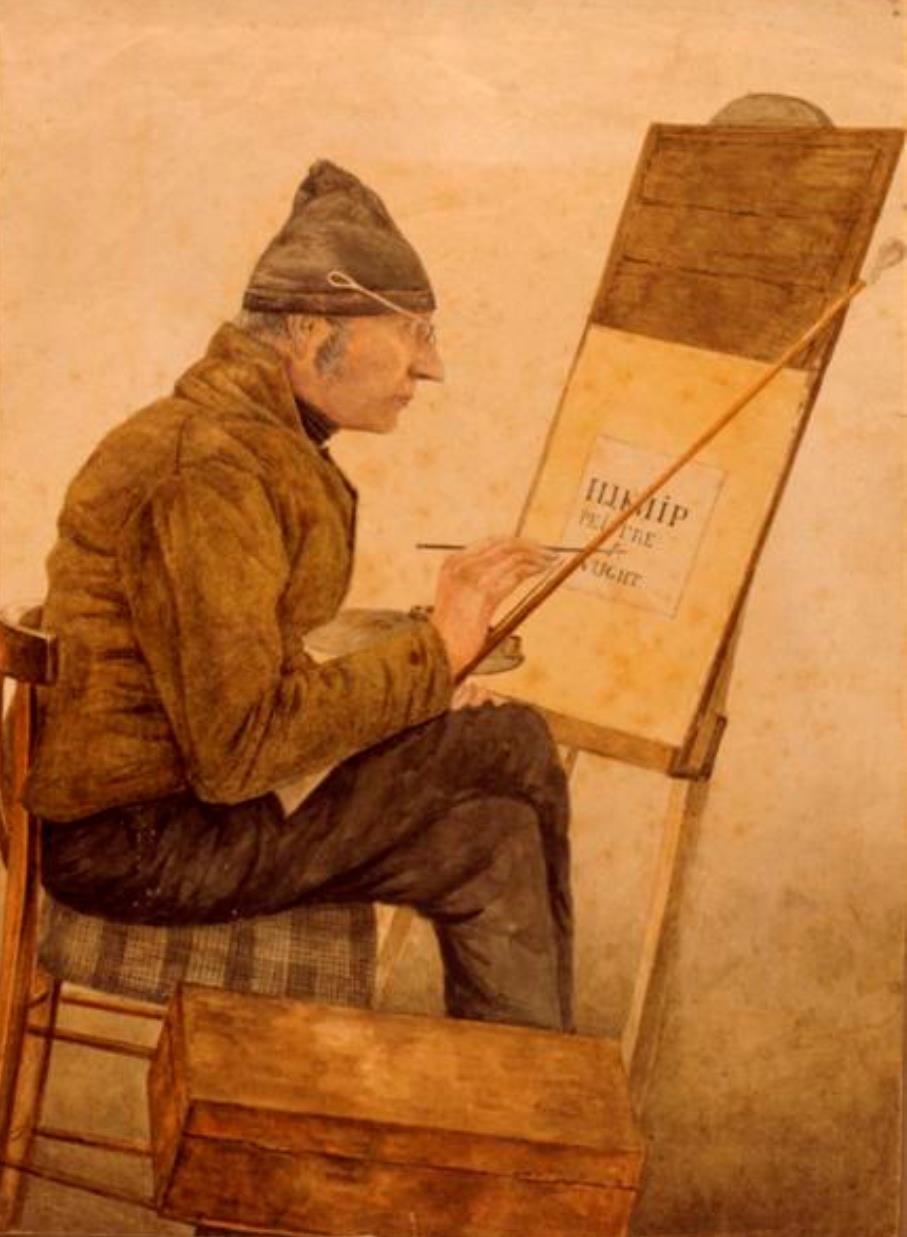
Hendrikus Johannes Knip or Henri Knip was a Dutch and Belgian landscape painter in the style of Dutch Romanticism and a draftsman.
A member of the Knip artistic dynasty: his father was the painter Matthäus Derk Knip (1785-1845), his grandfather was the painter Nicolaas Frederik Knip, and his uncles and aunts were also painters.
Hendrikus Knip worked in the Netherlands, Belgium, Italy and Switzerland.
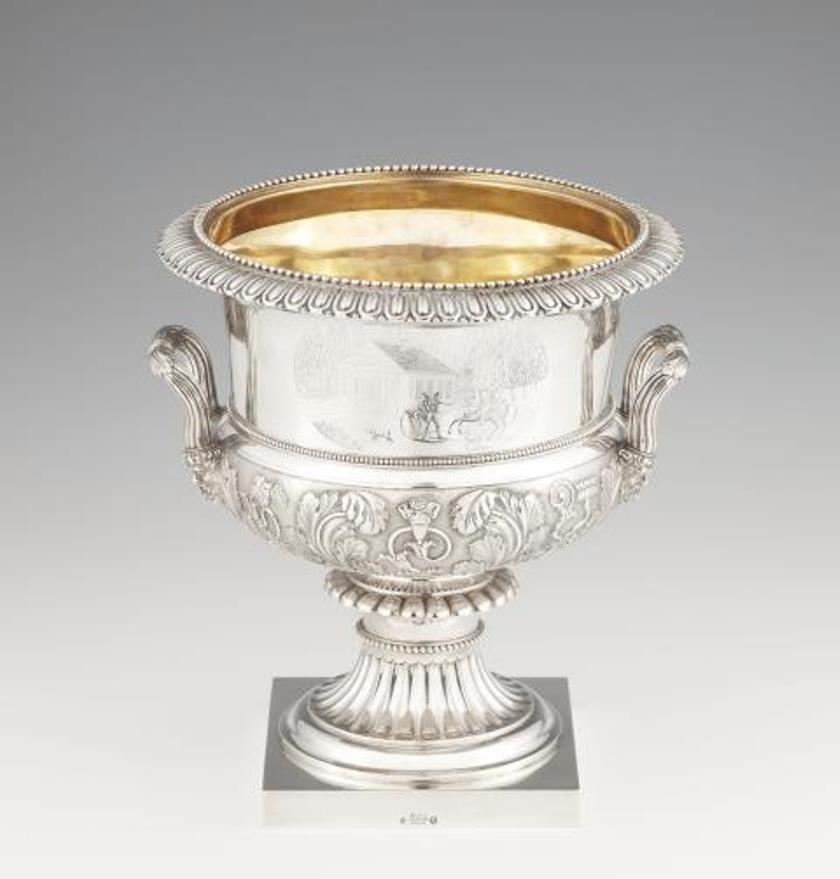
Johann George Hossauer was a German jewelry artist, entrepreneur and inventor.
Hossauer began working at the bronze factory of Werner & Mietke in Berlin and trained under the jeweler Henri de Ruolz. In 1819, King Friedrich Wilhelm III of Prussia financially supported the factory, which was managed by Hossauer. This factory produced articles of platinum, gold, silver, bronze, gilded and silvered copper and employed up to 100 people. At one of the first trade exhibitions in Berlin, the master received a gold medal for his work, and in 1826 the king granted him the title of jeweler of His Majesty the King.
As a prominent Berlin jeweler, Hossauer executed several orders of the Prussian court, including the Pour Le Merite and the Order of St. John, and also participated in the creation of the Russian Order of St. Vladimir and the Hanoverian House Order of St. George. He created silver table sets for Prussian princes and fulfilled other prestigious orders, produced jewelry, medals, and numerous pieces of gold and silverware.
In 1845, Hossauer sold his patent for the electroplating process to Werner von Siemens, and ten years later he was appointed a judge at the World's Fair in Paris.
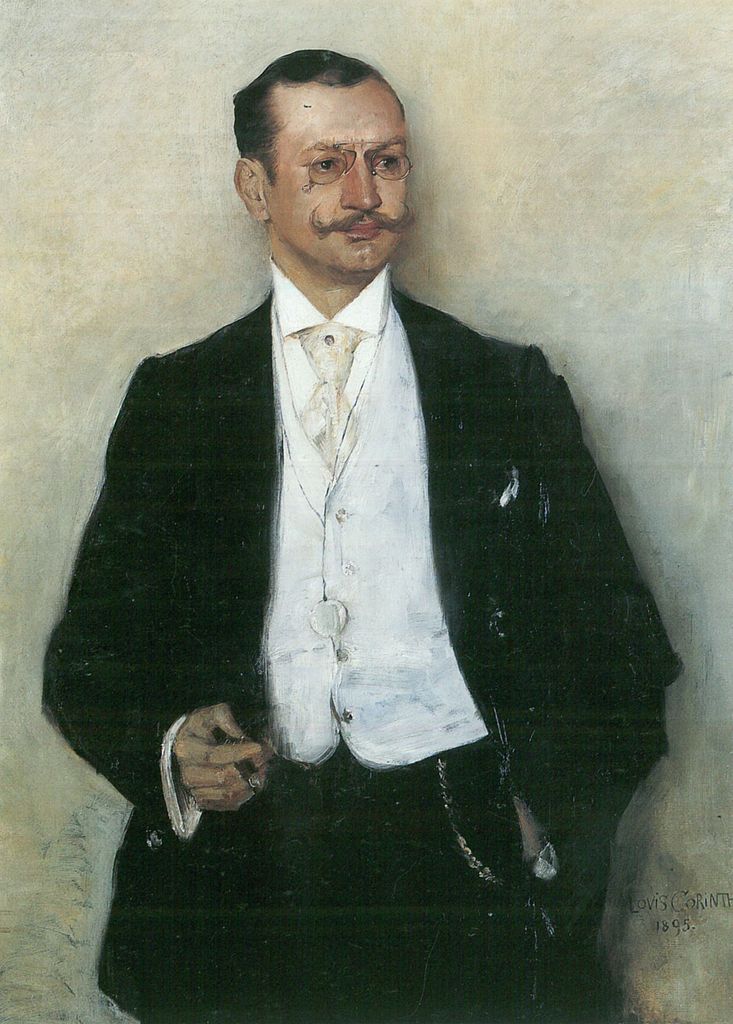
Carl Strathmann was a German painter in the Art Nouveau and Symbolist styles.
He was a member of the artists' association, Allotria and, briefly, the Munich Secession, but left after some unspecified disputes. In 1904, together with René Reinicke, Hans Beat Wieland, Rudolf Köselitz, Wilhelm Jakob Hertling, and several others, he co-founded the Munich Watercolorists' Association. He exhibited with the Deutscher Künstlerbund and the Berlin Secession, which held a major showing of his work in 1917.
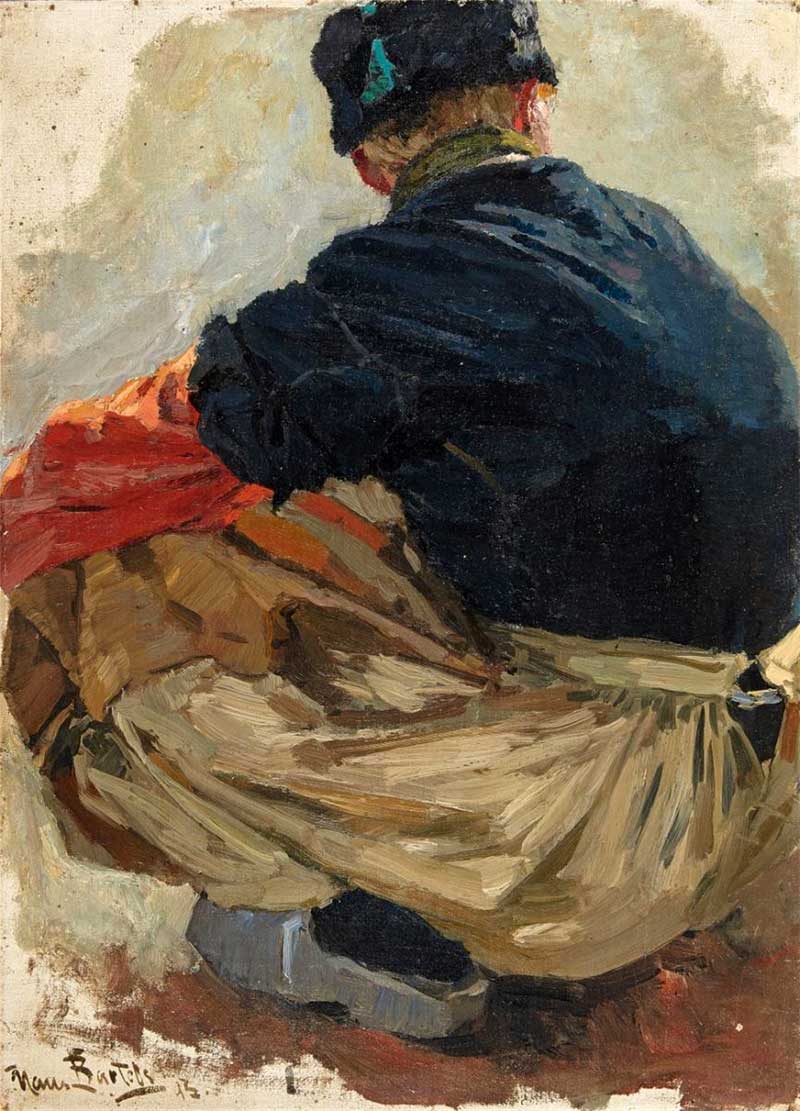
Hans von Bartels was a German painter.
Bartels is associated with the Düsseldorf school of painting. Although an oil painter of great power, he is also one of the leading German water-colour painters, mainly of marines and scenes of fishing life, painted with rude vigour and a great display of technical skill. Bartels made a great contribution to the development of the watercolour. He was the first to use watercolour paint of large formats without the earlier conventions. From 1887 Von Bartels came every summer to the Dutch coast, especially to Katwijk aan Zee, to paint the fisherfolk and their labour. He excels in storm scenes and in depicting the strong, healthy fishing-folk of the northern coasts. He became an honorary member of leading English, German, Dutch, Belgian and Austrian art societies.
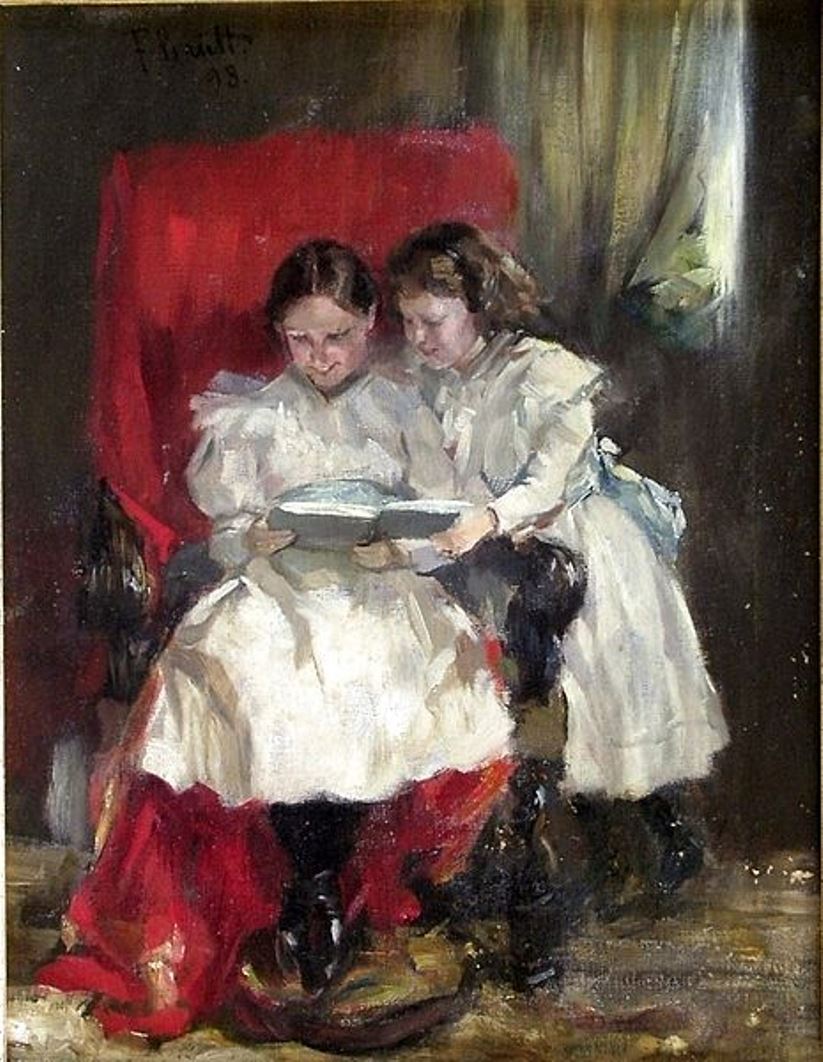
Ferdinand Brütt, full name Ferdinand Martin Cordt Brütt, was a German Impressionist painter.
Brütt began his studies at the Hamburg School of Applied Arts, then continued at the Art School of the Grand Duke of Saxony in Weimar before embarking on an extended study trip to Italy. For many years he lived in the Kronberg artists' colony in Kronberg im Taunus.
Brütt painted more often scenes from public places, particularly court sessions, domestic genre subjects and landscapes. From 1906 to 1913 he created several large wall and ceiling murals for the city of Frankfurt. In 1905 he was commissioned to design a large public hall in the town hall of Frankfurt am Main.
Ferdinand Brütt also taught at the Academy of Arts Düsseldorf, was a member of the Association of German Artists and was a member of the Association of Artists of Malkasten.
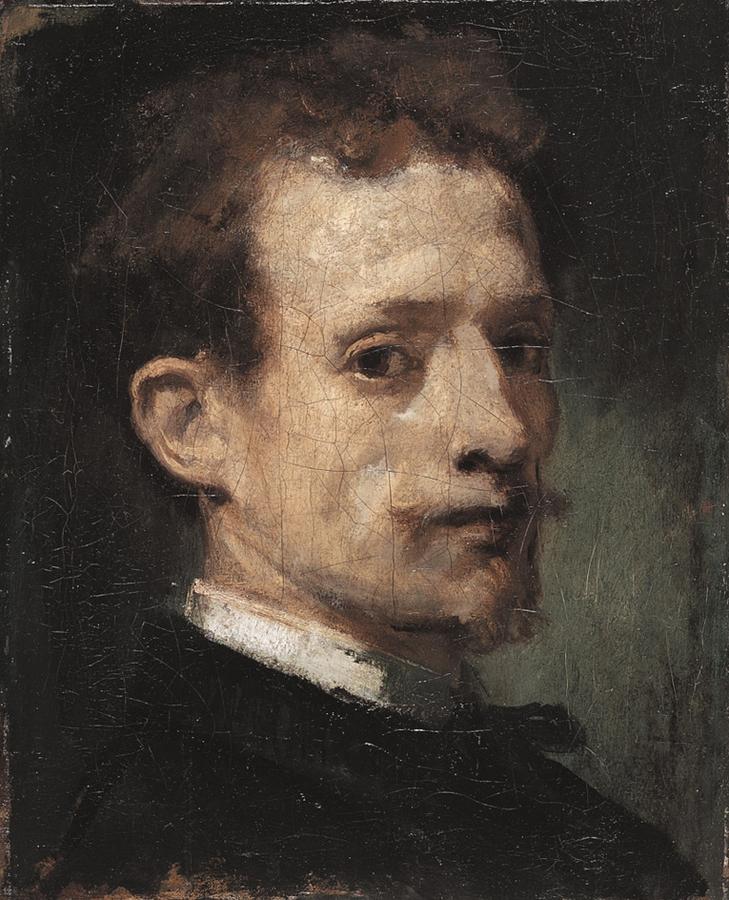
Hans von Marees was a German artist of the mid-nineteenth century. He is known as a painter and graphic artist, a representative of symbolism.
Von Marees was a prominent not only practitioner but also art theorist. He created the "Roman Circle" of German artists, whose activities in Italy seriously influenced the development of fine art of the turn. Marees 's work was centered on the theme of harmonious coexistence between man and nature, he sought to achieve the ideal relationship between form and space, as in the art of the ancient Greeks and the Italian Renaissance. At the height of his career, he turned to mythological subjects and developed a sophisticated technique, creating deep and saturated colors with layers of oil paint.

Hans von Marees was a German artist of the mid-nineteenth century. He is known as a painter and graphic artist, a representative of symbolism.
Von Marees was a prominent not only practitioner but also art theorist. He created the "Roman Circle" of German artists, whose activities in Italy seriously influenced the development of fine art of the turn. Marees 's work was centered on the theme of harmonious coexistence between man and nature, he sought to achieve the ideal relationship between form and space, as in the art of the ancient Greeks and the Italian Renaissance. At the height of his career, he turned to mythological subjects and developed a sophisticated technique, creating deep and saturated colors with layers of oil paint.

Hans von Marees was a German artist of the mid-nineteenth century. He is known as a painter and graphic artist, a representative of symbolism.
Von Marees was a prominent not only practitioner but also art theorist. He created the "Roman Circle" of German artists, whose activities in Italy seriously influenced the development of fine art of the turn. Marees 's work was centered on the theme of harmonious coexistence between man and nature, he sought to achieve the ideal relationship between form and space, as in the art of the ancient Greeks and the Italian Renaissance. At the height of his career, he turned to mythological subjects and developed a sophisticated technique, creating deep and saturated colors with layers of oil paint.

Hans von Marees was a German artist of the mid-nineteenth century. He is known as a painter and graphic artist, a representative of symbolism.
Von Marees was a prominent not only practitioner but also art theorist. He created the "Roman Circle" of German artists, whose activities in Italy seriously influenced the development of fine art of the turn. Marees 's work was centered on the theme of harmonious coexistence between man and nature, he sought to achieve the ideal relationship between form and space, as in the art of the ancient Greeks and the Italian Renaissance. At the height of his career, he turned to mythological subjects and developed a sophisticated technique, creating deep and saturated colors with layers of oil paint.

Hans von Marees was a German artist of the mid-nineteenth century. He is known as a painter and graphic artist, a representative of symbolism.
Von Marees was a prominent not only practitioner but also art theorist. He created the "Roman Circle" of German artists, whose activities in Italy seriously influenced the development of fine art of the turn. Marees 's work was centered on the theme of harmonious coexistence between man and nature, he sought to achieve the ideal relationship between form and space, as in the art of the ancient Greeks and the Italian Renaissance. At the height of his career, he turned to mythological subjects and developed a sophisticated technique, creating deep and saturated colors with layers of oil paint.
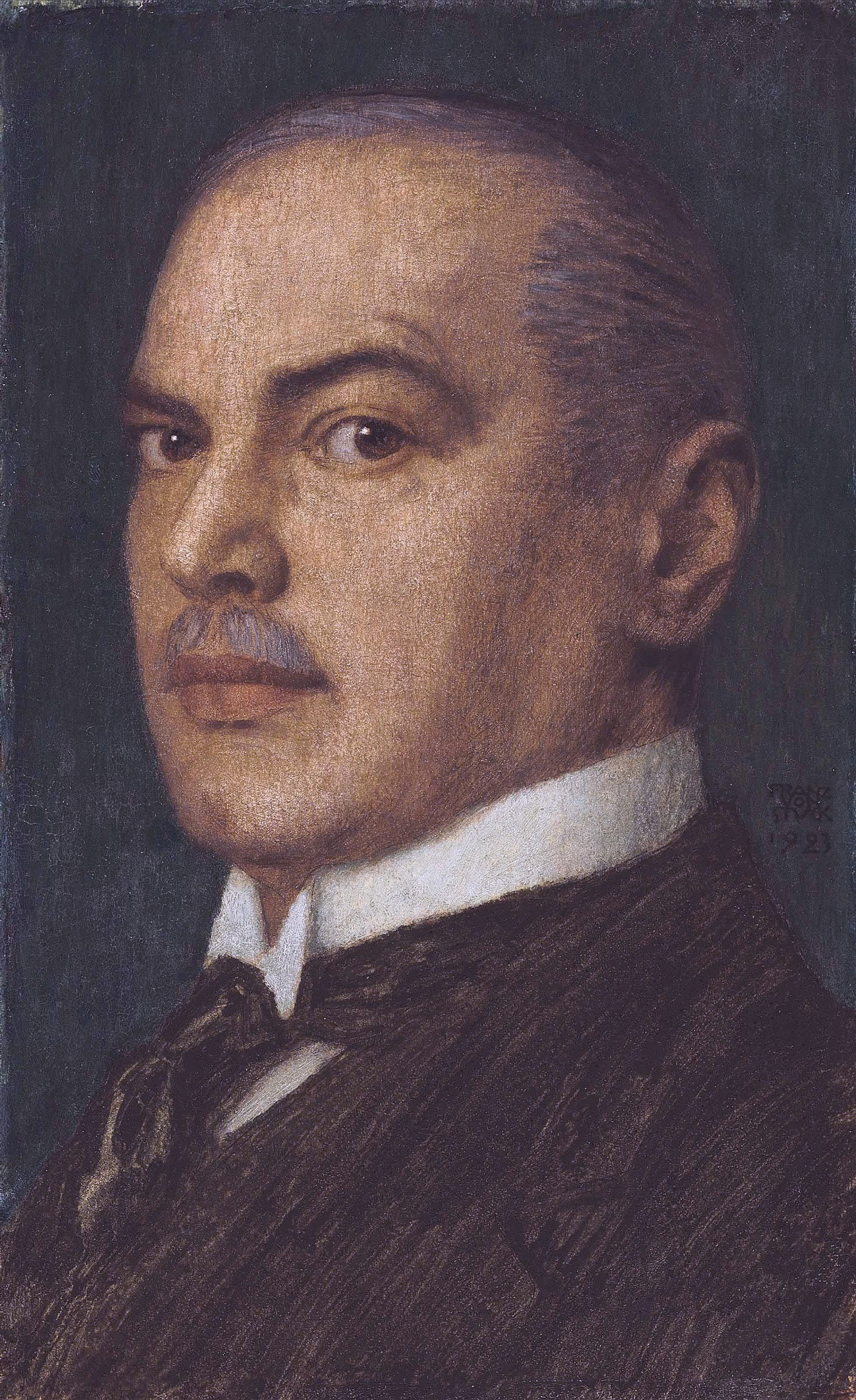
Franz von Stuck was a German painter, sculptor, printmaker, and architect. Stuck was best known for his paintings of ancient mythology, receiving substantial critical acclaim with The Sin in 1892.

Franz von Stuck was a German painter, sculptor, printmaker, and architect. Stuck was best known for his paintings of ancient mythology, receiving substantial critical acclaim with The Sin in 1892.
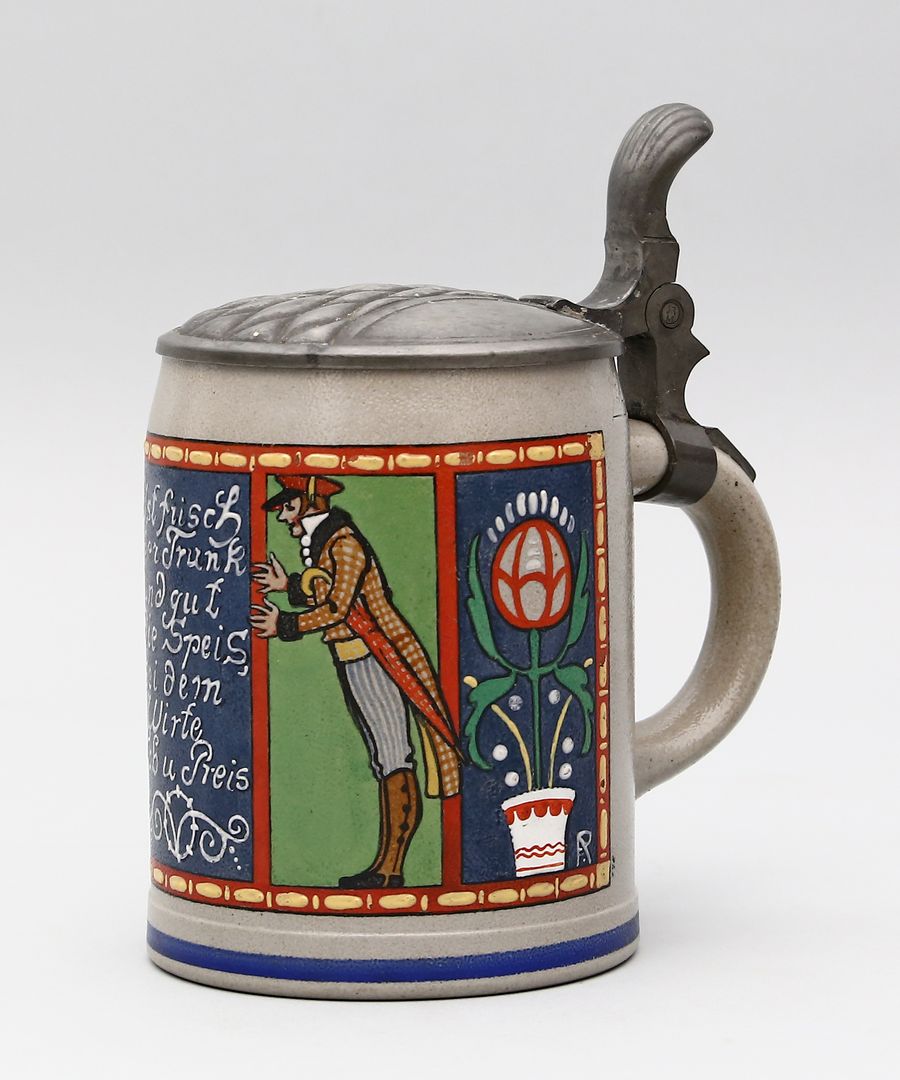
Franz Ringer is a German painter, graphic designer and sculptor.
Franz Ringer came from an old Munich family of carpenters. At the age of 20 he traveled to Tyrol and Switzerland, enrolled at the Technical University of Aachen, returned to Munich and worked as an assistant to the sculptor Josef von Kramer (1841-1908) for ten years, which shaped him as a master stylistically and technically.
Ringer was one of the best-known decorative arts artists in Munich at the time, and he artistically designed many restaurants in Bavaria and in Munich. His design projects are extremely varied.
Franz Ringer is also known as the creator of stone and glass beer mugs, which he painted in Art Nouveau, Art Deco or Biedermeier style. The first Ringer mugs to go into production were made by Villeroy & Boch in 1905. These mugs quickly became popular with the public, especially at scheduled conferences and festivals. Ringer worked for many ceramic manufacturers in Germany. In addition to Villeroy & Boch, these included Reinhold Merkelbach, Merkelbach & Wick, Marzi & Remi, Albert Jakob Thewalt and others.
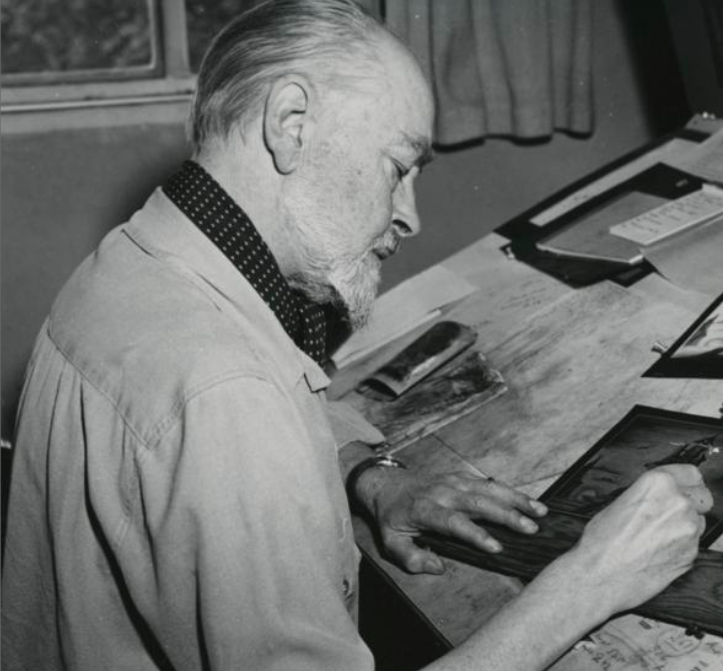
Kay Rasmus Nielsen is a Danish illustrator and one of the leading artists of the Golden Age of Illustration in the early 20th century. Nielsen was a prolific collaborator with the Disney Company, for which he created many narrative sketches and illustrations, including for the feature film Fantasia.

Paul Mathias Padua was a German painter. He felt committed to the tradition of Wilhelm Leibl, a realist who was highly esteemed by Adolf Hitler, and was extremely successful as an artist during the National Socialist era.
